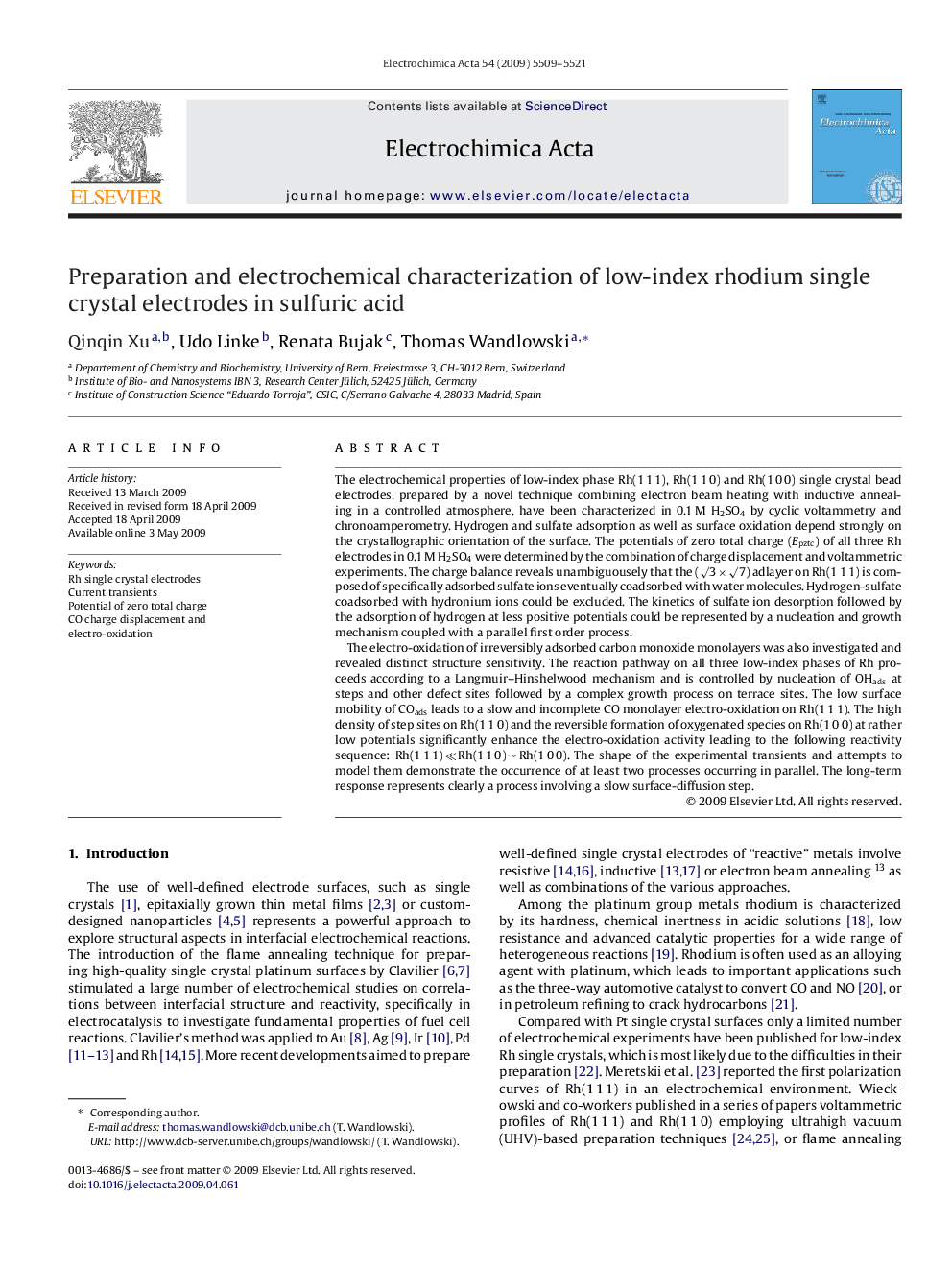| Article ID | Journal | Published Year | Pages | File Type |
|---|---|---|---|---|
| 191829 | Electrochimica Acta | 2009 | 13 Pages |
The electrochemical properties of low-index phase Rh(1 1 1), Rh(1 1 0) and Rh(1 0 0) single crystal bead electrodes, prepared by a novel technique combining electron beam heating with inductive annealing in a controlled atmosphere, have been characterized in 0.1 M H2SO4 by cyclic voltammetry and chronoamperometry. Hydrogen and sulfate adsorption as well as surface oxidation depend strongly on the crystallographic orientation of the surface. The potentials of zero total charge (Epztc) of all three Rh electrodes in 0.1 M H2SO4 were determined by the combination of charge displacement and voltammetric experiments. The charge balance reveals unambiguousely that the (√3 × √7) adlayer on Rh(1 1 1) is composed of specifically adsorbed sulfate ions eventually coadsorbed with water molecules. Hydrogen-sulfate coadsorbed with hydronium ions could be excluded. The kinetics of sulfate ion desorption followed by the adsorption of hydrogen at less positive potentials could be represented by a nucleation and growth mechanism coupled with a parallel first order process.The electro-oxidation of irreversibly adsorbed carbon monoxide monolayers was also investigated and revealed distinct structure sensitivity. The reaction pathway on all three low-index phases of Rh proceeds according to a Langmuir–Hinshelwood mechanism and is controlled by nucleation of OHads at steps and other defect sites followed by a complex growth process on terrace sites. The low surface mobility of COads leads to a slow and incomplete CO monolayer electro-oxidation on Rh(1 1 1). The high density of step sites on Rh(1 1 0) and the reversible formation of oxygenated species on Rh(1 0 0) at rather low potentials significantly enhance the electro-oxidation activity leading to the following reactivity sequence: Rh(1 1 1) ≪ Rh(1 1 0) ∼ Rh(1 0 0). The shape of the experimental transients and attempts to model them demonstrate the occurrence of at least two processes occurring in parallel. The long-term response represents clearly a process involving a slow surface-diffusion step.
